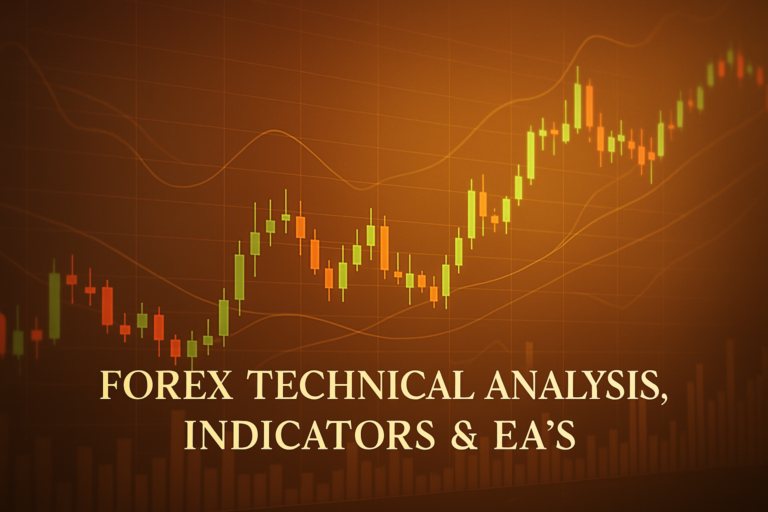
FX analysis is essential for Forex trading success; mastering it can lead to better decisions and increased profits.
FX analysis is a crucial part of Forex trading. It helps traders understand market movements and make informed decisions. By analyzing currency pairs, traders can spot trends and predict future price movements. This knowledge is essential for both beginners and experienced traders.
However, many traders struggle with fx analysis. Beginners often feel overwhelmed by the amount of information available. Professionals may find it difficult to stay updated with fast-moving markets. Understanding and applying fx analysis can lead to better trading results and increased profits.
The Stochastic Oscillator is a popular tool used in fx analysis. It helps traders identify momentum and potential reversal points in the market.
Understanding the FX Analysis
FX analysis can be complex, but it boils down to understanding how currency pairs move. When traders analyze a currency pair, they look at various factors, including economic indicators, political events, and market sentiment. For example, if the US economy is doing well, the USD may strengthen against other currencies. This can lead to profitable trading opportunities.
Market-related reasons can cause sudden price changes. News releases, economic data, or unexpected events can impact currency values. For instance, if a country announces a surprise interest rate hike, traders may react quickly, causing the currency to soar or drop. Understanding these situations is key for successful fx analysis.
Pro’s and Con’s of FX Analysis
When it comes to fx analysis, there are both pros and cons. Let’s explore them:
- Pros:
- Improved Decision Making: FX analysis helps traders make informed choices based on data.
- Identifying Trends: Traders can spot trends early, allowing them to enter or exit trades at the right time.
- Risk Management: By understanding market movements, traders can manage their risks better.
- Cons:
- Overcomplication: For beginners, the amount of data can be overwhelming, leading to confusion.
- Market Volatility: Sudden market changes can render analysis useless in some cases.
- Emotional Trading: Traders might ignore their analysis due to emotional reactions to market movements.
To mitigate these issues, here are some steps:
- Stay Educated: Keep learning about market trends and tools to enhance your fx analysis.
- Practice with Simulators: Use demo accounts to practice trading strategies without risking real money.
- Develop a Trading Plan: Have a clear strategy that includes risk management and analysis techniques.
For advanced traders, it’s essential to remember that while fx analysis is vital, it should not be your only guide. Trust your instincts and experience when making trading decisions.
Furthermore, understanding Hedging Restrictions can help improve your fx analysis by managing risks effectively.
Frequently Asked Questions
1. What is FX analysis?
FX analysis refers to the study of currency pairs in Forex trading. It involves examining market data, economic indicators, and news events to forecast price movements. Traders use various tools and techniques to analyze these factors and make informed trading decisions.
2. How do I start with FX analysis?
To begin with fx analysis, start by learning the basics of Forex trading and the factors that influence currency prices. Use online resources, courses, or books to educate yourself. Practice using demo accounts to apply your knowledge in real-time without risking real money.
3. What tools can help with FX analysis?
Several tools can assist with fx analysis, including technical indicators like moving averages and the Stochastic Oscillator. Charting software also helps visualize price movements. Additionally, economic calendars provide information about upcoming news that can impact currency pairs.
4. Is fx analysis suitable for everyone?
While fx analysis can be beneficial for many traders, it may not suit everyone’s trading style. Some traders prefer to rely on intuition or follow market sentiment instead. It’s essential to find a method that works best for you and complements your trading approach.
5. How often should I perform FX analysis?
The frequency of fx analysis depends on your trading style. Day traders may analyze the market multiple times a day, while swing traders may do it weekly. Regardless, regular analysis helps stay updated with market changes and make informed trading decisions.
Conclusion
In summary, understanding fx analysis is crucial for successful Forex trading. By familiarizing yourself with market trends and analysis techniques, you can improve your trading strategies. Remember, this issue can be managed with practice and dedication. Stay informed and keep enhancing your skills!
Trading can be a journey filled with ups and downs. Embrace the learning process, and remember that every mistake is a step closer to success. Keep pushing forward!
Recommended Next Steps
To continue your journey in mastering fx analysis, consider these steps:
- Read books on technical and fundamental analysis.
- Join online Forex trading communities to share experiences and learn from others.
- Attend webinars or workshops focused on fx analysis techniques.
- Regularly review your trades to identify areas for improvement.
Expand your knowledge with proven strategies from Myfxbook, Investopedia
Expand Your Knowledge
- 📌 Forex Trading Learning Road Map
- 📌 Forex Trading Course with no Fees
- 📌 Forex Trading Issues, Problems, and Solutions
- 📌 Forex Daily Forecast & Live Updates
- 📌 Forex Fundamental & News Analysis: Tomorrow’s Market Movers & Trade Opportunities
- 📌 Forex Education Hub: Learn & Profit
- 📌 Forex Technical Analysis, Indicators & EA’s
Start Trading Today
Ready to take your forex trading to the next level? Open an account with Exness, one of the most trusted platforms in the industry. 👉 Sign Up Now and trade with confidence!
My recommended broker stands out with ultra-low spreads for beginners, instant withdrawals, and zero spread accounts for pro traders.
Trusted since 2008, lightning-fast execution, no hidden fees, and a secure, transparent trading environment—giving you the edge you need to succeed. 🚀
Watch this helpful video to better understand fx analysis:
Note: The video above is embedded from YouTube and is the property of its original creator. We do not own or take responsibility for the content or opinions expressed in the video.
In this video, the presenter shares insights from over five years of experience in Forex trading, emphasizing the importance of chart analysis in predicting market movements. A chart is a fundamental tool that displays real-time price movements of various financial assets, including currencies, stocks, bonds, and cryptocurrencies. The primary goal of analyzing these charts is to identify the market’s direction, which enables traders to anticipate whether prices will rise (bullish market) or fall (bearish market). Two main approaches to understanding market trends are fundamental analysis and technical analysis. While fundamental analysis focuses on economic data and news, technical analysis relies on charts and patterns that recur in the market. The presenter highlights key concepts, such as trends characterized by higher highs and higher lows for bullish markets, and lower lows and lower highs for bearish markets, which are vital for making informed trading decisions.
Furthermore, the video explains critical areas of trading, specifically support and resistance levels. Support acts as a “floor” where prices tend to bounce upwards, making it an ideal entry point for buying. Conversely, resistance acts as a “roof,” where prices tend to fall, making it the best point for selling. The presenter also discusses candlestick patterns that provide insights into market behavior at these key levels. For example, a head and shoulders pattern at resistance indicates a potential downward trend, while an inverted head and shoulders at support suggests an upward trend. Other patterns, like break and retest, help traders recognize when to enter or exit trades effectively. By mastering these concepts, traders can develop strategies to capitalize on market movements, potentially earning significant profits. For those interested in learning more about effective trading strategies, the presenter invites viewers to explore his “set and forget” strategy, which has reportedly helped many students achieve substantial weekly earnings.
In trading, one critical issue that traders may encounter is order execution failure. This problem can occur due to various factors, including high volatility, slippage, or connectivity issues, preventing traders from executing their trades as intended. Understanding and mitigating order execution failures is essential for maintaining a successful trading strategy and ensuring that trades are executed at the desired price points.





